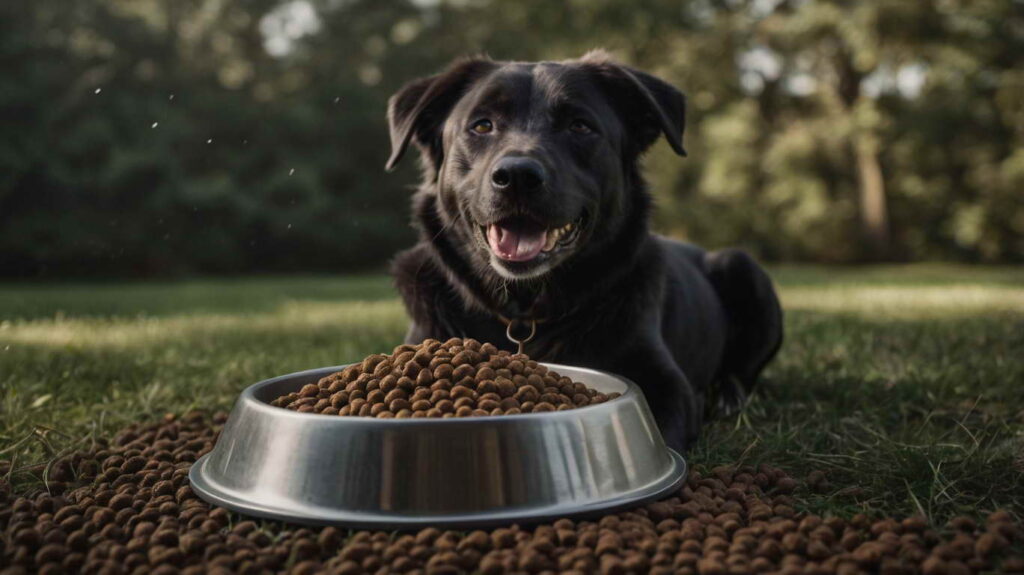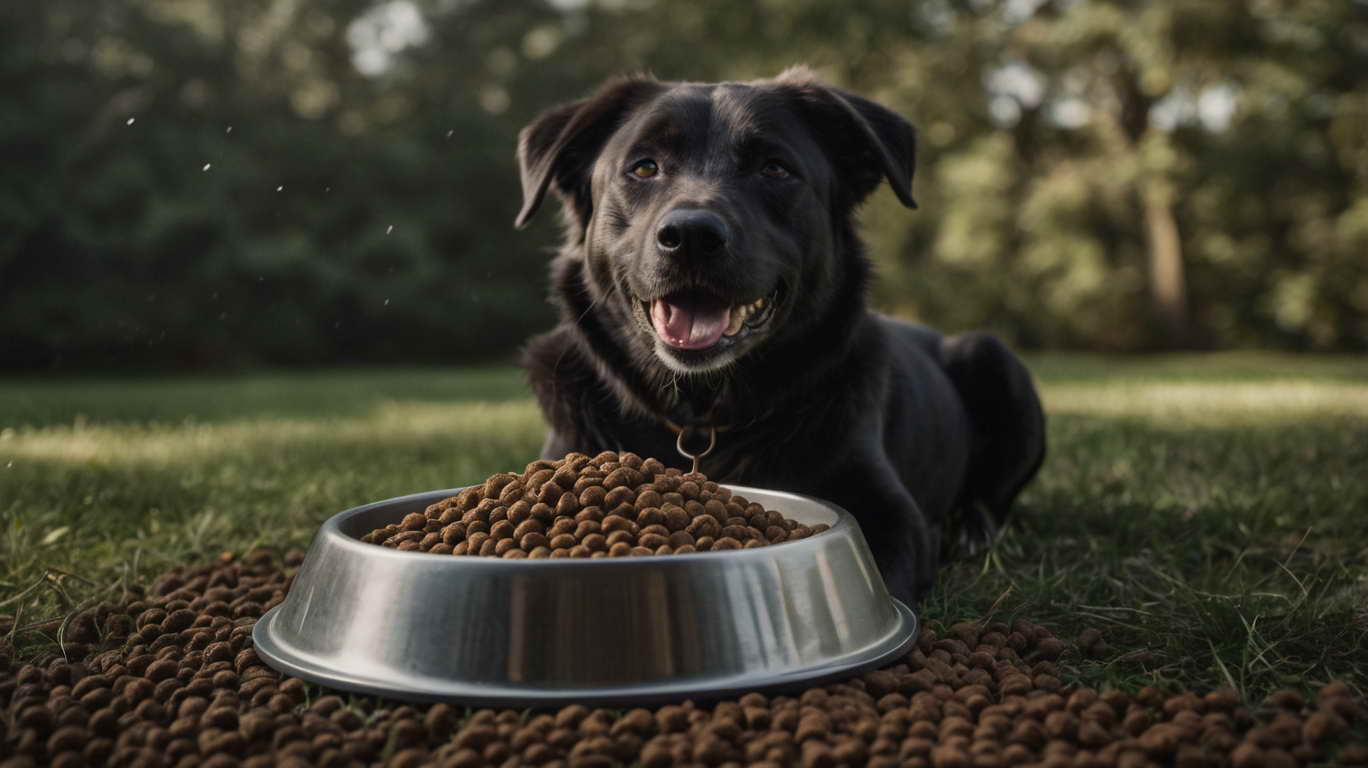
The Best Dog Food That Helps With Shedding: A Trainer’s Guide
Hey there, fellow dog lover! As a professional dog trainer who’s been in the game for years, I’ve seen my fair share of furry friends shedding all over the place. It’s like a never-ending battle with tumbleweeds of fur, right? But here’s the thing: what you feed your pup can make a huge difference in how much they shed. So, let’s dive into the world of dog food that can help keep those fur storms at bay.
Understanding Shedding: More Than Just a Hairy Situation
Before we jump into the best chow for your furry friend, let’s chat about why dogs shed in the first place. It’s not just to drive us crazy (though sometimes it feels that way).
Why Do Dogs Shed?
- Seasonal changes: Most dogs shed their winter coats in spring and summer coats in fall.
- Breed characteristics: Some breeds, like Huskies and German Shepherds, are notorious shedders.
- Health issues: Excessive shedding can be a sign of underlying health problems.
- Stress: Yep, even dogs can lose hair when they’re stressed out.
- Nutrition: This is where we come in – poor nutrition can lead to excessive shedding.
The Nutrition-Shedding Connection
Now, here’s where it gets interesting. The food you’re putting in your dog’s bowl can have a massive impact on their coat health. Think of it like this: if you ate nothing but junk food, your hair and skin wouldn’t look too hot, right? Same goes for our four-legged friends.
Key Nutrients for a Healthy Coat
- Protein: The building block of hair.
- Omega-3 and Omega-6 fatty acids: These keep the skin moisturized and the coat shiny.
- Vitamins A and E: Essential for skin health.
- Zinc: Helps with coat growth and repair.
- Biotin: Promotes a healthy, shiny coat.
Best Dog Food Ingredients That Help With Shedding
Alright, now we’re getting to the good stuff. When you’re scanning those dog food labels (and I know it can be overwhelming), here are some ingredients you want to see:
1. High-Quality Protein Sources
Look for foods that list real meat as the first ingredient. We’re talking:
- Chicken
- Lamb
- Beef
- Fish (especially salmon)
These protein sources are packed with amino acids that are crucial for healthy hair growth.
2. Fish Oil
This is like liquid gold for your dog’s coat. It’s rich in those omega-3 fatty acids we talked about earlier. If you see ingredients like:
- Salmon oil
- Menhaden fish oil
- Cod liver oil
You’re on the right track!
3. Flaxseed
Another great source of omega-3s, plus it’s got fiber to keep your pup’s digestive system happy.
4. Sweet Potatoes
These orange wonders are packed with beta-carotene, which converts to vitamin A in your dog’s body. Vitamin A is crucial for skin health.
5. Eggs
Nature’s perfect protein package, eggs also contain biotin and other B vitamins that promote a healthy coat.
6. Fruits and Vegetables
Look for foods that include a variety of fruits and veggies. They’re packed with antioxidants and vitamins that support overall health, including skin and coat health. Some great options include:
- Blueberries
- Spinach
- Carrots
- Pumpkin
Raw Meat Diets: A Controversial Option
Now, let’s talk about the elephant in the room – or should I say, the raw steak on the floor? Raw meat diets for dogs have gained popularity in recent years, with some owners swearing by their benefits for coat health and reduced shedding. The idea is that these diets mimic what dogs would eat in the wild, providing high-quality protein and natural nutrients. Proponents claim that raw diets can lead to shinier coats, healthier skin, and less shedding. However, it’s important to note that raw diets are controversial in the veterinary community. While some dogs thrive on them, there are risks of nutritional imbalances and bacterial contamination.
If you’re considering a raw diet to help with shedding, it’s crucial to consult with your vet first. They can help you weigh the pros and cons and ensure you’re meeting all of your dog’s nutritional needs. Remember, whether you’re feeding kibble, wet food, or raw, the key is balanced nutrition tailored to your dog’s specific needs.
Top Dog Food Brands That Help With Shedding
Okay, I know you’re probably thinking, “Just tell me what to buy already!” I hear you. While every dog is different, here are some brands that I’ve seen work wonders for many of my clients’ shedding issues:
1. Blue Buffalo Wilderness High Protein Grain Free
This food is packed with real meat and fish oil. It’s grain-free, which can be beneficial for some dogs with sensitivities.
Pros:
- High in protein
- Contains omega-3 and omega-6 fatty acids
- Includes antioxidant-rich fruits and vegetables
Cons:
- On the pricier side
- Not suitable for dogs who need grain in their diet
2. Hill’s Science Diet Adult Sensitive Stomach & Skin
This one’s great for dogs with sensitive tummies and skin issues.
Pros:
- Easy to digest
- Contains vitamin E and omega-6 fatty acids for skin health
- Prebiotic fiber for gut health
Cons:
- Not grain-free (though this isn’t necessarily a con for all dogs)
- Some picky eaters might not like the taste
3. Purina Pro Plan Focus Sensitive Skin & Stomach
Another excellent option for dogs with sensitivities.
Pros:
- Real salmon as the first ingredient
- Contains prebiotic fiber
- Omega-6 fatty acids and zinc for skin health
Cons:
- Contains some by-products, which some owners prefer to avoid
- Not suitable for dogs with fish allergies
4. Royal Canin Breed Health Nutrition
This brand offers breed-specific formulas, which can be great if your dog’s shedding is related to their breed characteristics.
Pros:
- Tailored to specific breed needs
- Contains a blend of vitamins and nutrients for coat health
- Kibble shape designed to encourage chewing (which can indirectly help with coat health)
Cons:
- More expensive than some other options
- Limited flavor options within each breed formula
5. Wellness CORE Natural Grain Free
Another grain-free option that’s packed with good stuff for your dog’s coat.
Pros:
- High protein content
- Contains omega fatty acids
- Includes probiotics for digestive health
Cons:
- Some dogs may need an adjustment period when switching to this high-protein diet
- Not suitable for dogs who need grains in their diet
Homemade Additions to Combat Shedding
Now, I know not everyone can afford premium dog food all the time. And that’s okay! There are some simple, affordable additions you can make to your dog’s regular food to help with shedding:
- Coconut oil: A teaspoon of coconut oil mixed into your dog’s food can work wonders for their coat. Start with small amounts to avoid digestive upset.
- Sardines: These little fish are packed with omega-3s. Just make sure they’re packed in water, not oil.
- Eggs: As mentioned earlier, eggs are a nutritional powerhouse. You can add a cooked egg to your dog’s food a few times a week.
- Pumpkin puree: Not only is it great for digestion, but it’s also rich in vitamins and minerals that support coat health.
- Bone broth: This nutrient-rich liquid can be a great addition to your dog’s diet. Just make sure it doesn’t contain any onions or garlic.
Remember, always introduce new foods slowly and in small amounts to avoid upsetting your dog’s stomach.
Beyond Food: Other Tips to Reduce Shedding
While we’re focusing on food here, I’d be remiss if I didn’t mention a few other things you can do to keep shedding under control:
- Regular brushing: This is huge. Daily brushing can significantly reduce the amount of hair you find around your house.
- Bathing: Regular baths with a deshedding shampoo can help, but don’t overdo it. Too much bathing can dry out your dog’s skin.
- Supplements: Fish oil supplements or specific coat-health supplements can be beneficial. Always check with your vet before starting any new supplement regimen.
- Stay hydrated: Make sure your dog always has access to fresh, clean water. Hydration is key for skin and coat health.
- Regular vet check-ups: Sometimes excessive shedding can be a sign of an underlying health issue. Regular vet visits can catch these early.
The Transition: Switching to a New Food
So, you’ve decided to switch up your dog’s food to help with shedding. Great! But hold your horses – you can’t just swap out their old food for the new stuff overnight. Here’s how to make the transition smooth:
- Week 1: Mix 25% new food with 75% old food.
- Week 2: Go 50/50 with the new and old food.
- Week 3: Mix 75% new food with 25% old food.
- Week 4: If all has gone well, you can now feed 100% new food.
This gradual transition helps prevent digestive upset. And trust me, you don’t want to deal with that!
When to See a Vet
While changing your dog’s diet can often help with shedding, sometimes excessive hair loss can be a sign of something more serious. If you notice any of the following, it’s time to book a vet appointment:
- Bald patches or significant thinning of the coat
- Red, inflamed, or irritated skin
- Constant scratching or biting at the skin
- Dull, dry, or brittle fur
- Sudden increase in shedding
- Other changes in behavior or appetite
Remember, you know your dog best. If something seems off, it’s always better to err on the side of caution and get them checked out.
The Patience Game: Results Take Time
Here’s the thing about switching to a new food to help with shedding: it’s not an overnight fix. Your dog’s coat grows in cycles, and it can take a few months to see the full effects of a dietary change. So, don’t get discouraged if you don’t see immediate results. Stick with it, and you should start to notice improvements over time.
Conclusion: A Holistic Approach to Shedding
At the end of the day, managing your dog’s shedding is about more than just picking the right food (though that’s a big part of it). It’s about taking a holistic approach to your pup’s health and well-being.
High-quality nutrition, regular grooming, plenty of exercise, and lots of love – that’s the recipe for a happy, healthy dog with a beautiful coat. And let’s face it, even if they’re still shedding more than you’d like, it’s hard to be mad when they’re looking up at you with those adorable puppy eyes, right?
Remember, every dog is unique. What works for one might not work for another. Don’t be afraid to experiment (safely, of course) to find what works best for your furry friend. And if you’re ever in doubt, your vet is always your best resource.
So, here’s to healthier coats and fewer fur tumbleweeds rolling across your living room floor. Your vacuum cleaner will thank you!

Leave a Reply